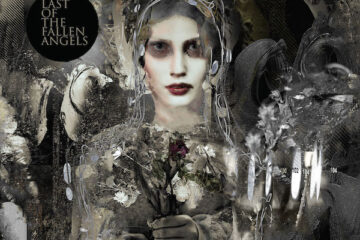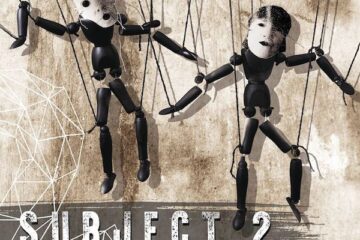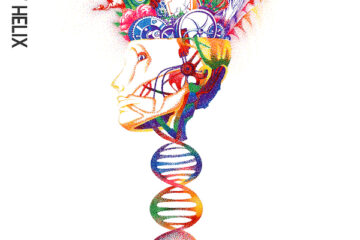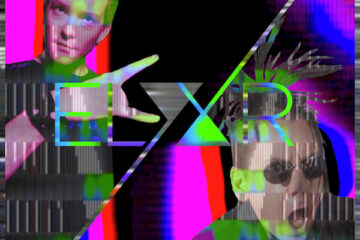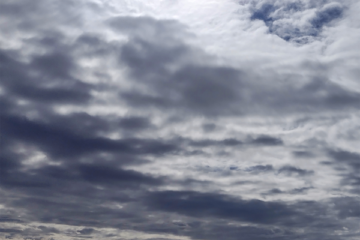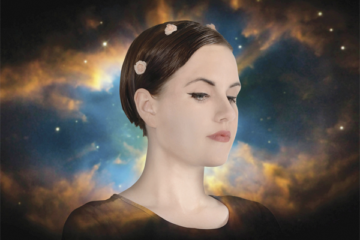In a dark time, the eye begins to see…
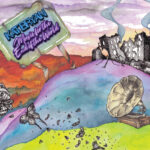
If your tastes for electronic music stretch to a more folk-inspired palette, then Kat Bryan’s Music For The End Of The World is a debut album that deserves your attention. As TEC’s review suggested previously, Bryan’s work is certainly a polar shift from your common-or-garden electronic act, but its darker, more soulful elements carry an effective emotional punch.
The trajectory of Kat Bryan’s musical journey is, by her own words, quite an odd one. Her formative years saw the Canadian singer-songwriter achieving some recognition within folk circles. “But I was young and wasn’t emotionally or mentally prepared for the industry and ended up backing out of it, really before I got a good start. I stayed out of it for almost 20 years. It was always in the back of my head as the path not taken, and I kept it as a ‘maybe someday I’ll live my dream’ goal.”
That sabbatical came to an end just as the COVID pandemic loomed on the horizon, prompting Bryan to begin writing music once again. In many ways, Bryan found that composing music also provided a therapeutic process during a period where the pandemic and her own anxiety and mental health issues weighed heavily (this is, not surprisingly, reflected in the title of the album). The music, meanwhile, has a particular mood about it which suggests at times reflection and at others perhaps a world-weariness. “My musical aesthetic is about darkness” suggests Bryan, “but it is about the beauty that is found in that darkness.”
The most obvious comparison to draw with Bryan’s music is that of fellow Canadian Sarah McLachlan, whose emotive compositions have a similar sense of vulnerability about them (this seems, in particular, to apply to the lush rhythms of ‘At the End of the World’).
But Bryan’s well of inspiration pulls from acts as diverse as Nils Frahm, Sigur Rós and Imogen Heap. “I’m also really inspired by innovation” suggests Bryan, “Artists like Nils Frahm who does things with pianos that are mind-blowing, and Kinnie Starr who creates her own beats from stuff she finds around and has been inspiring female producers since the 90s”.
‘Circus of the Living’, which opens the album, has a beguiling quality to it care of its layered vocal effects. At the same time, there’s something a little unsettling at its heart; a darker element that’s a little more difficult to pin down. Meanwhile, the mournful piano moods of ‘Bliss’ offers a more intimate episode, but also with a barbed lyrical commentary (“Is your only bliss making others not exist?”).
There’s a more brisk aspect to the more dramatic ‘Fading Light’ which dabbles in commentary on environmental themes with its earnest querying on a disappearing world: “Where will we go?”
‘Centre of the Earth’ employs brooding piano tones and a desaturated musical palette offset by some skittering percussion. Meanwhile, Bryan’s vocal delivery has a haunting fragility with its ponderous musings (“We should have seen it coming/We should have read the signs”).
The album also serves up the gauzy pop of ‘The Sonnet’ which employs a softer quality and also utilises a more prominent electronic layering. By contrast, ‘Long Way Home’ is a more sedate, dreamier composition with lush arrangements and Bryan’s lyrical musings on paths travelled (or not).
The album closes with the evocative ‘At the End of the World’, which is a thing of beauty in itself. Slow piano notes trickle across a mesmerising track that features Bryan’s honeyed vocal delivery (“When the solar system dims/And the world no longer spins/You will find me waiting here for you”).
Music for the End of the World is, on the surface, an unusual electronic music project that certainly invites the listener to expand their musical boundaries. But the album is ultimately filled with moments that manage to touch something deep in the heart, while also serving up an impressive vocal performance.
Music for the End of the World is out now on AnalogueTrash.
https://katbryan.bandcamp.com/
Photo by Tanya Goehring Photography.



